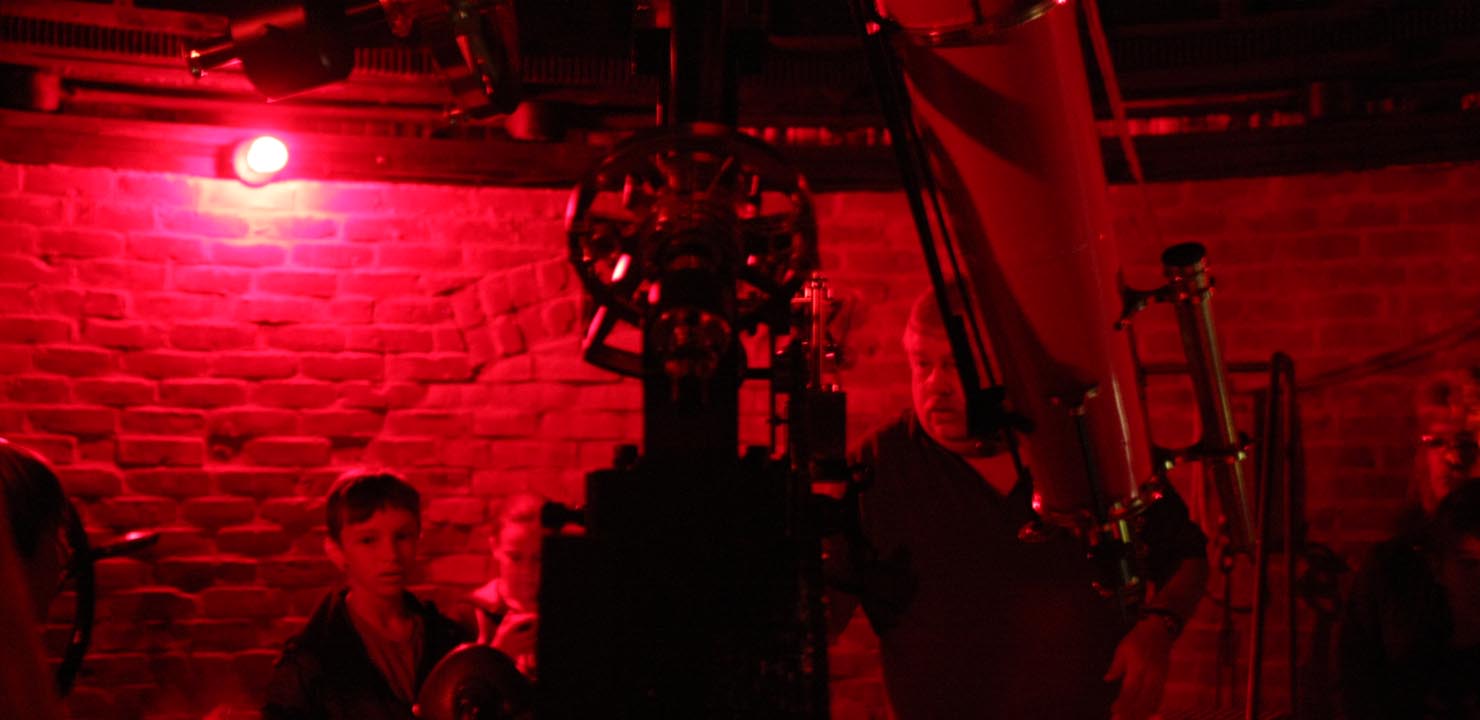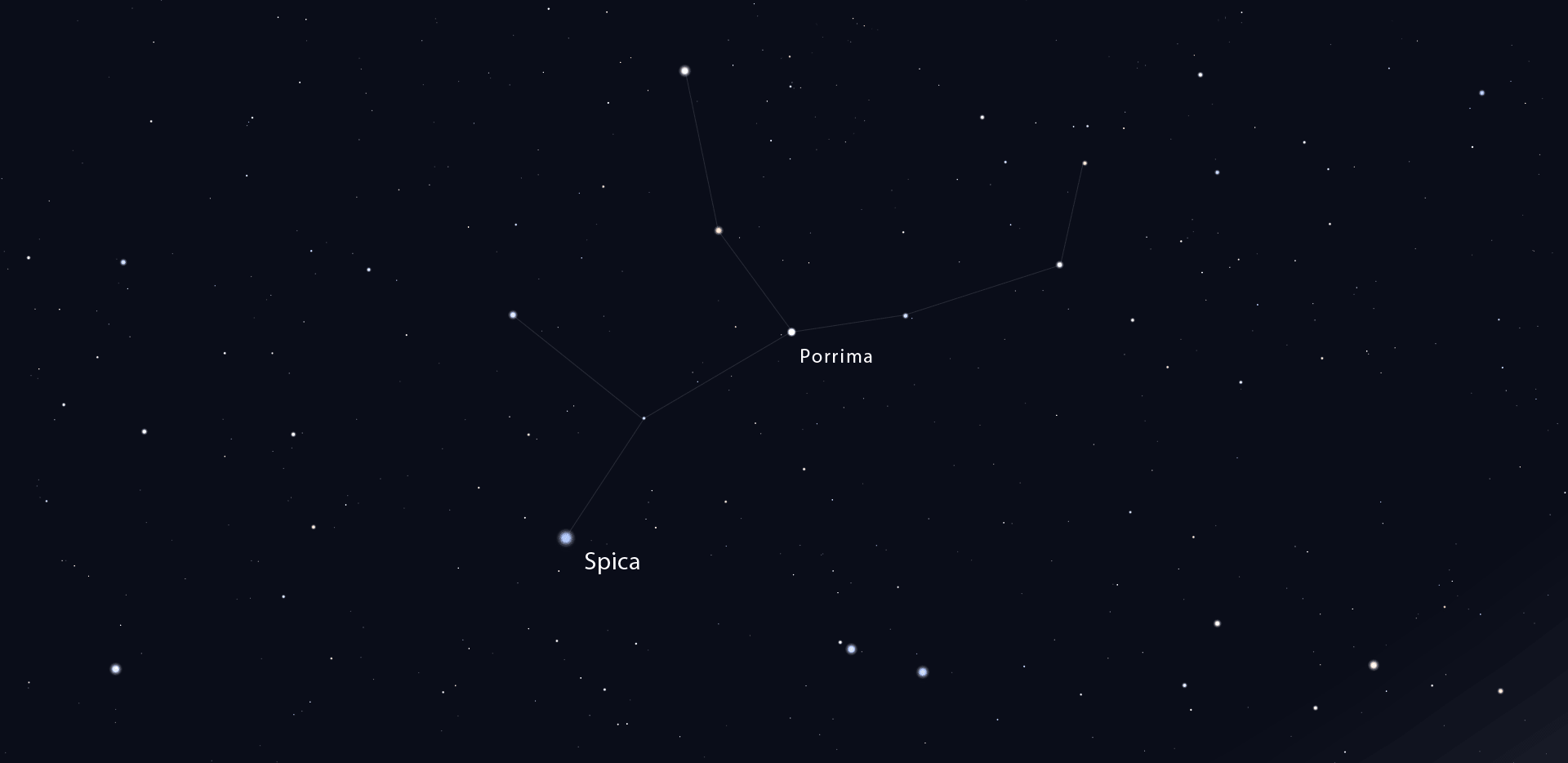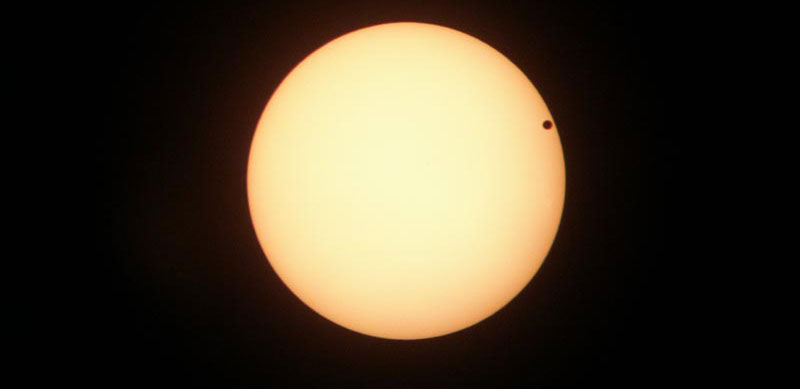May 2012
A General History and Significance of the Transit of Venus
Francine JacksonBy now, you should be aware that the last Transit of Venus for over a century will be taking place next month. If you were able to observe the one in June of 2004, you know that what you're waiting for is the planet Venus passing directly across the face of the Sun.
The main question is why doesn't this happen any time Venus passes between the Sun and us? This is the same as asking why don't we have solar eclipses every New Moon? The Sun as we see it is only 1/2 degree in angular size, and Venus is only a tiny little sphere, so lining them both up for our enjoyment is much harder than you can imagine. In fact, their period is one of the stranger in all of science: Two within an eight-year period, 105 1/2 years, two within an eight-year period, 121 1/2 years, two within an eight-year period... And yes, Mercury also undergoes transits, but does so about 12 times every century. We'll be able to observe one, weather permitting, in 2016.
Venus transits were first written about by Johannes Kepler in 1627, who predicted that one would occur four years later; unfortunately, Kepler died in 1630, but all accounts say that he was very near-sighted, so he probably wouldn't have seen it, anyway. Actually, no one saw it, although Gasendi tried, but the sky was cloudy, and the Sun had set from his vantage point before the transit started, so he would have been denied the chance to see it, anyway.
Kepler missed a scheduled transit for 1639, but its occurrence was noted and observed by two people: Jeremiah Horrox, and his pen pal William Crabtree.
Edmund Halley, while still very young, observed a transit of Mercury, and realized the mathematical possibility of using transits to determine the distance between the Sun and the Earth, the astronomical unit. This standard candle was utilized to form a relationship with the Sun and all the (then) known planets - From Mercury to Saturn - but the actual length of this was unknown. Halley noted that, although a transit of Mercury could be used for this, Mercury is very small and rather far away; Venus, on the other hand, is much larger and about twice as close to Earth, so its passage across the Sun would be much easier to observe. This resulted in a large number of expeditions to the most optimal sites for the transits of 1761 and 1769. However, despite the fact that scientists did watch this from many places, the actual distance was not very accurate.
Luckily, there was another set of Venus transits coming up in order to try again to perfect the length of the astronomical unit, in 1874 and 1882. However, these also resulted in inaccurate observations, and the U.S. government didn't budget enough to allow the mathematics to be configured, but better, less rare planetary alignments had by then been developed, so we are pretty sure of the 92,900,000 figure that we use today.
Next month's transit of Venus will be nothing more than a curiosity, but one that, if you don't see it, you will have missed out on your last chance to view this very rare astronomical occurrence. Don't miss it!
How to Safely Observe and Photograph the Sun (and the Transit of Venus)
Bob Horton

"Super Moon" makes brief appearance between clouds & fog


Clear skies give way to poor conditions, obscuring all but Mars & Saturn



Mars, Saturn and spring galaxies greet the end of an 8-week cloud streak


Observing with Bob Horton's homemade 4¼-inch reflector

A General History and Significance of the Transits of Venus
: By Francine JacksonThe Full Moon in May
: By Francine Jackson
Porrima: Binary Star in Virgo
: By Glenn Chaple




